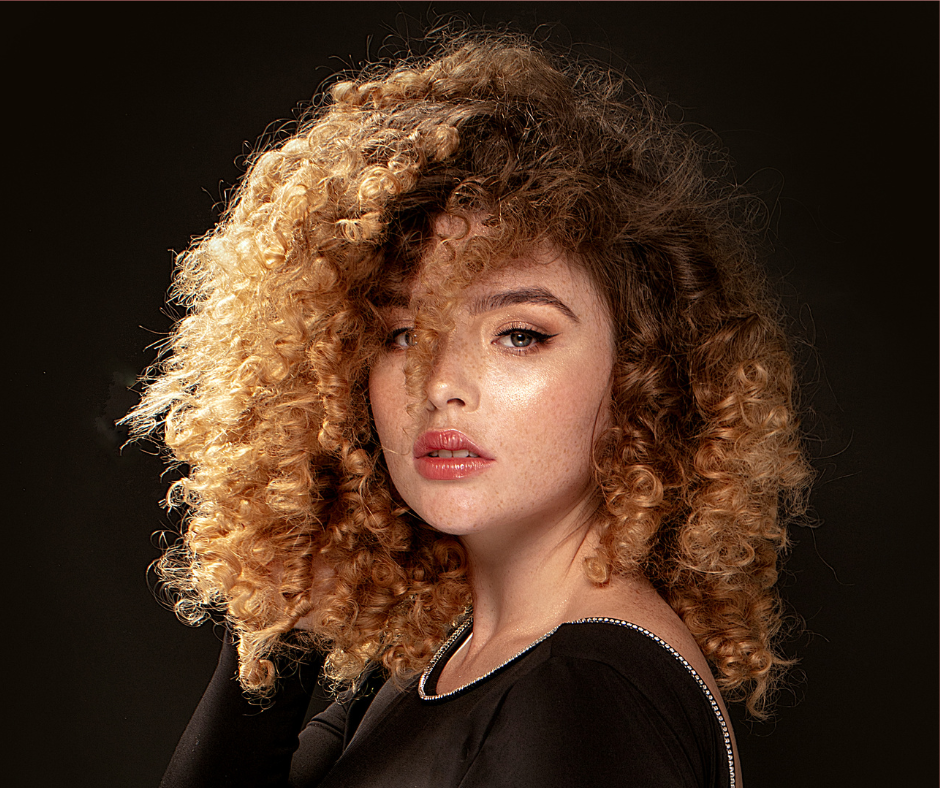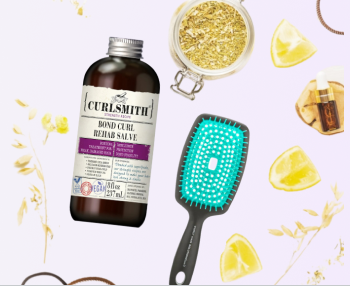In an effort to have the best hair you can, you might be damaging your curls without even realizing it!
Let’s look at seven common curly hair habits to avoid, and what you can do instead to keep your curls healthy and thriving.
1. Joining the "No Poo" Movement
No judgment here, but put a finger down if you’ve tried (or still do) the no-poo method!
The idea of ditching shampoo for a more natural approach—like using an apple cider vinegar rinse, baking soda, or bentonite clay—might sound appealing, but it can have some serious downsides. Without proper cleansing, you risk product buildup and scalp issues such as dandruff or irritation, leaving your curls looking dull and weighed down.
If you’re concerned that regular shampoos are too harsh and strip your hair’s natural oils, there’s a better alternative: the low-poo method. Low-poo involves using a sulphate-free shampoo that provides more cleansing power than a co-wash but remains gentle on your hair and scalp. Most curly shampoos are naturally low-poo.
Here are some signs that it might be time to switch from no-poo to low-poo:
- Hair that feels limp, weighed down or coated with a product-like film.
- Hair that feels overly soft or mushy when wet and struggles to hold a curl.
- Oily roots, even shortly after washing.
- An irritated or uncomfortable scalp.
Some websites will say that these symptoms are part of your hair "detoxing" or that it will get better, but in our experience, the downsides to giving up shampoo out number the supposed benefits, especially with curly hair.
Low-poos work best for medium to low-porosity hair, fine or low-density hair, grease-prone curls, looser curl patterns, and individuals with specific scalp concerns.
Some of the best low-poos include:
- Bounce Curl Pure Silk Moisturizing Shampoo
- Camille Rose Sweet Ginger Cleansing Rinse
- Jessicurl Gentle Lather Shampoo
- Giovanni Curl Habit Curl Defining Shampoo
Even with a low-poo shampoo, we recommend clarifying regularly. How often depends on your hair and scalp, but start with once a month and increase to once every 2-3 weeks if needed, or even more frequently if necessary. Having healthy hair means listening to your personal needs, not the needs of the internet!
2. Dry Detangling

Dry detangling is a big no-no! Brushing or combing dry curls can cause excessive breakage, disrupt curl clumps, and—let’s be honest—it’s painful too! There’s really no reason to detangle when your hair is dry.
Always detangle when your hair is wet or damp using a conditioner or detangling spray for added slip. That "slip" makes detangling at home much easier and faster too.
Look out for detanglers with great slip, like Curl Keeper Slip, Aloe Hibiscus Leave-In Conditioner & Detangler, and Pretty Curly Girl Bye Tangles & Knots Conditioner. Use a wide-tooth comb, Flexy brush, or your fingers to gently work through any knots.
3. Not Protecting Your Hair at Night
When your curls aren’t properly protected at night—wrapped and tucked in a silk or satin bonnet or scarf—you’re setting yourself up for bedhead and a guaranteed nest of frizz. If you’re a restless sleeper and struggle to keep anything on your head, a satin pillowcase is your ultimate backup for protection.
Sleeping unprotected on cotton fabric robs your curls (and your skin) of moisture. With curly hair, natural oils and sebum struggle to travel down the shaft, so you definitely don’t want to lose any of that overnight. Plus, your nighttime care products won’t have the chance to work if you’re not protecting your hair. As a result, you’ll wake up to tangles, frizz, and even breakage from dryness.
Investing in a quality nighttime protection, such as the MoonstoneSeven Satin Sleeper, should be at the top of every curly girl’s essentials checklist!
4. Refreshing Hair Every Day
You don’t have to refresh your curls daily with water, apply products, and go through the entire process again just to make them look presentable! If you’re doing this because you’re waking up with crazy bedhead, it’s likely because you’re not protecting your hair while you sleep.
Refreshing your hair with water and more product frequently can lead to buildup, which will weigh down your curls over time and hinder curl formation. This means your curls won’t last as long, and you could end up damaging them in the process. Adding water every day can cause hair to swell, leading to unwanted frizz.
Protect your hair at night and watch your time spent refreshing get drastically reduced!
5. Over Styling
We’ve all been guilty of rocking those sleek, laid-back buns or face-lifting ponytails. But constantly pulling your hair into tight styles can lead to tension, stress, and even hair loss around the edges.
Give your hair a well-deserved break from tight styling by alternating with looser styles. One of my favourites is a low-back updo using a telephone cord-type hair tie—it holds perfectly without pulling or stressing your strands. You can also use a scrunchie or a PuffCuff; it gets the job done just as well!
6. Skipping Heat Protectant

The health of your hair should always come first, and minimizing heat damage is key. Whenever you need to apply heat to your curls—whether it’s with a diffuser, flat iron, or any other heat tool—be sure to spritz on a heat protectant! Heat can weaken your hair’s structure, leading to dryness, split ends, and breakage.
Consider using high-quality heat protectants like the Innersense Hair Love Prep Spray, Boucleme Curl Defence Spray, or Curlsmith Miracle Shield Protection Spray. These products protect your curls up to 450°F (230°C), shielding them from heat while keeping them healthy and strong.
7. Not Using the Right Products
Your product choices need to be customized for you based on your hair type and your lifestyle. It’s normal to want to try out products that are trending or said to work wonders, but it’s important to focus on what your hair truly needs, not what's popular on social media. This awareness is necessary to make the right decisions and involves understanding your hair porosity—basically how well your hair absorbs moisture—along with your hair density and texture. Knowing what product types are likely to work best can help you avoid a lot of wasted time, money, and effort.
It’s going to take a bit of trial and error to figure out how to apply those products, and that’s okay—it’s all part of the process! But knowing what your hair specifically needs and finding product to meet those requirements can make the journey much quicker and easier.
If you need help or guidance in figuring out the right products or would like personalized recommendations based on your hair needs, feel free to visit us in-store or send us an email at products@curlwarehouse.com.








